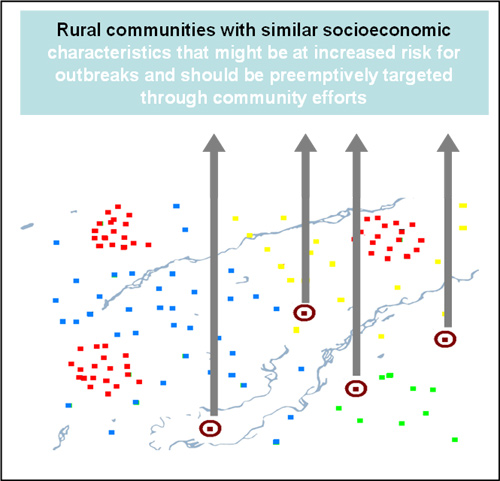Continuous Tracking and Analysis of Disease Outbreaks in Rural Areas of Lahore, Pakistan: Identifying Underserved Villages at High Risk for Outbreaks and Discovering Patterns Associated with Disease Incidence

DataHealth Pakistan.
The focus of this innovation is to explore the use of sophisticated analytical techniques and geographic information systems, coupled with the distribution of new cases recorded at healthcare facilities, to identify sub-communities in rural areas of Lahore that are at high risk for outbreaks. The Ministry of Health in Pakistan, as part of a project in association with USAID, UNICEF, WHO and World Bank, already maintains a national health information database with information from primary healthcare centres. We propose to extend this work through the following innovations:
- Use data from public hospitals to discover "hidden islands," i.e., identify underserved regions affected by disease where primary healthcare centres do not exist and patients had to visit the nearest city to seek treatment. These cases would not appear in the national health information database, which collects data from primary healthcare facilities. No such facilities exist in underserved regions, and disease outbreaks would therefore not be recorded for these areas. Instead, the disease numbers for such regions must be backwards-reconstructed by pooling hospitals records together.
- Supplement information about disease incidence in each region with detailed demographic and socioeconomic data collected by other government agencies and with data in geographic information systems (GIS) such as the ones that exist at MIT. This information allows for a means to relate communities and discover similarities that may be useful in pre-empting disease outbreaks and also for understanding factors that play a key role in the occurrence of a disease.
- Promote projects in high-risk sub-communities that might be able to spread awareness of protective mechanisms and simple therapies.
Final Proposal (PDF)
Final Presentation (PDF)
